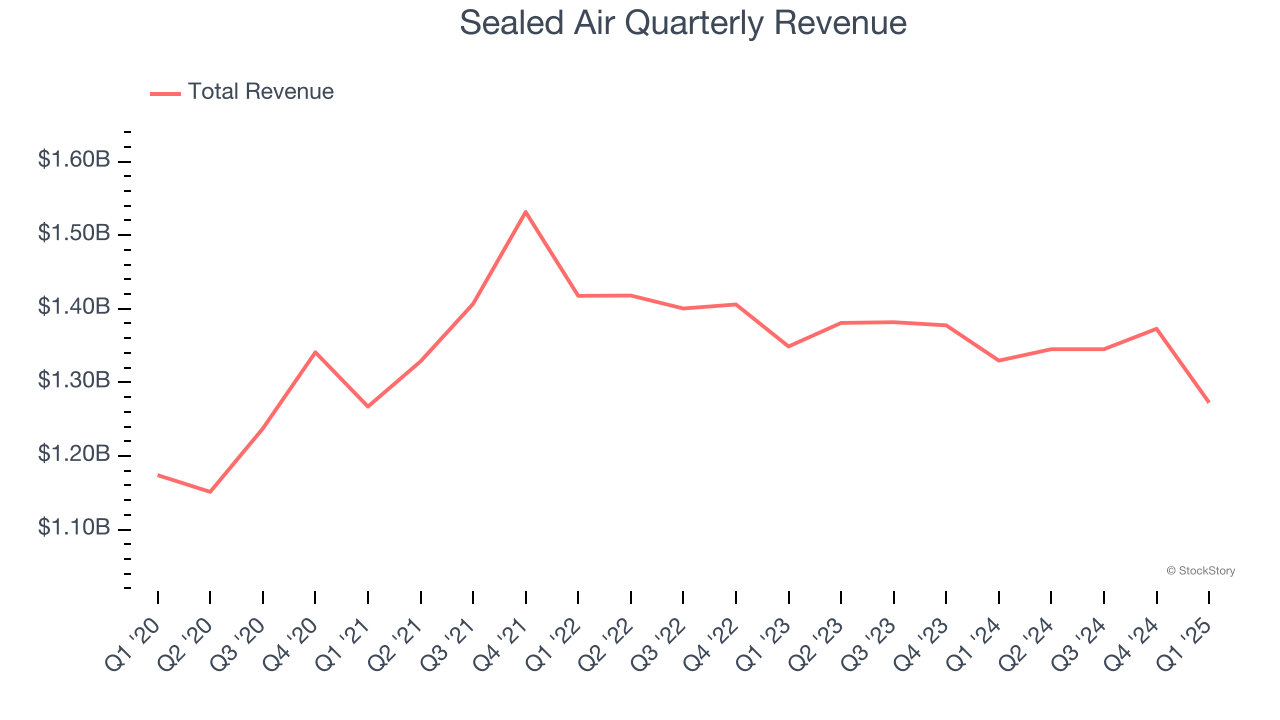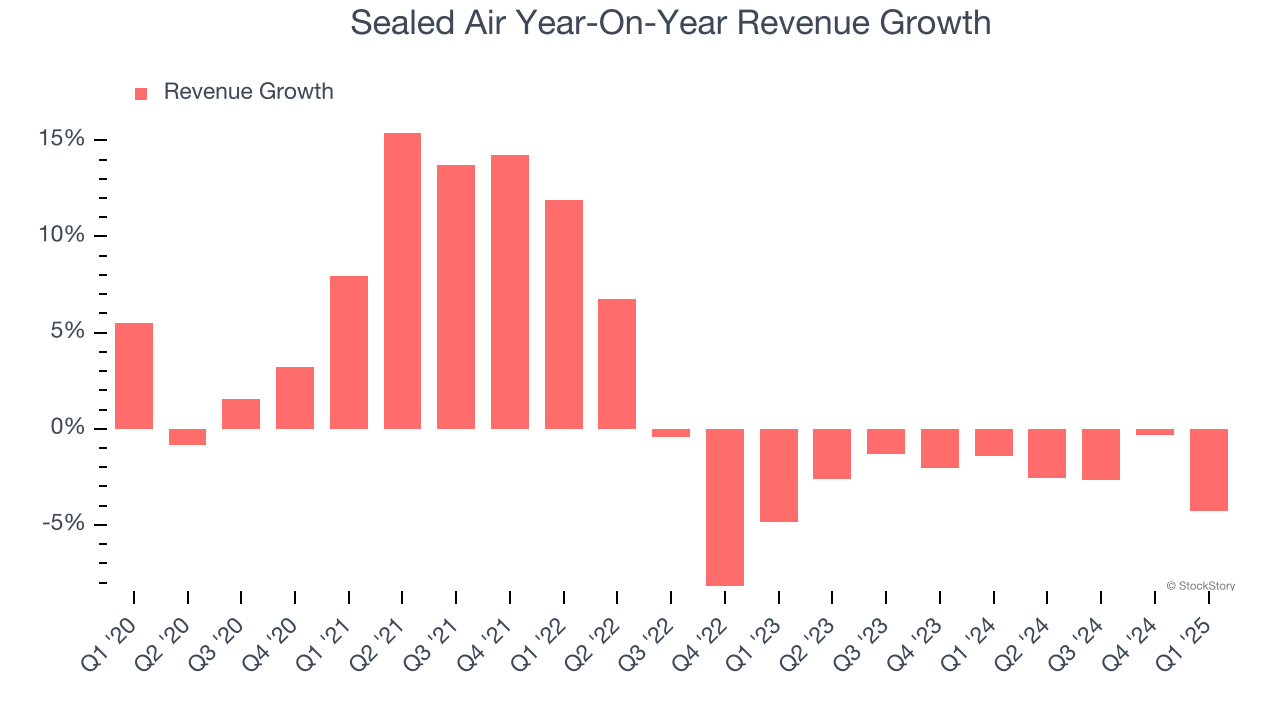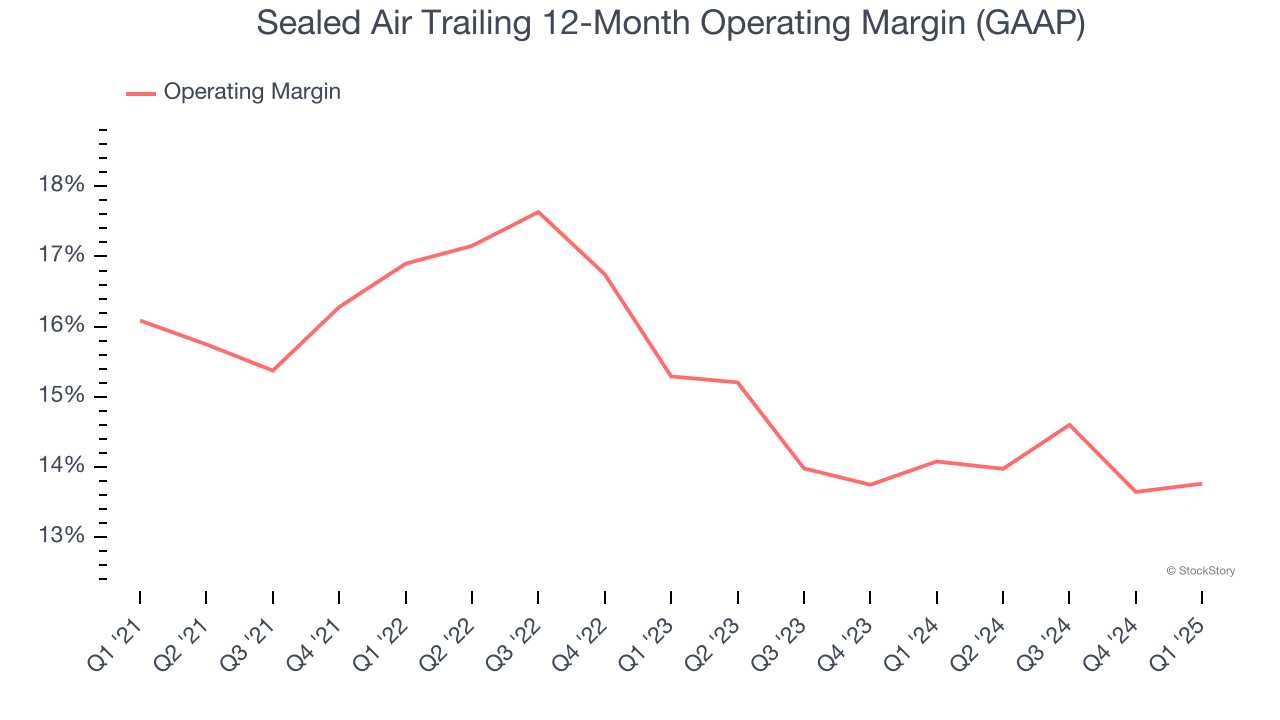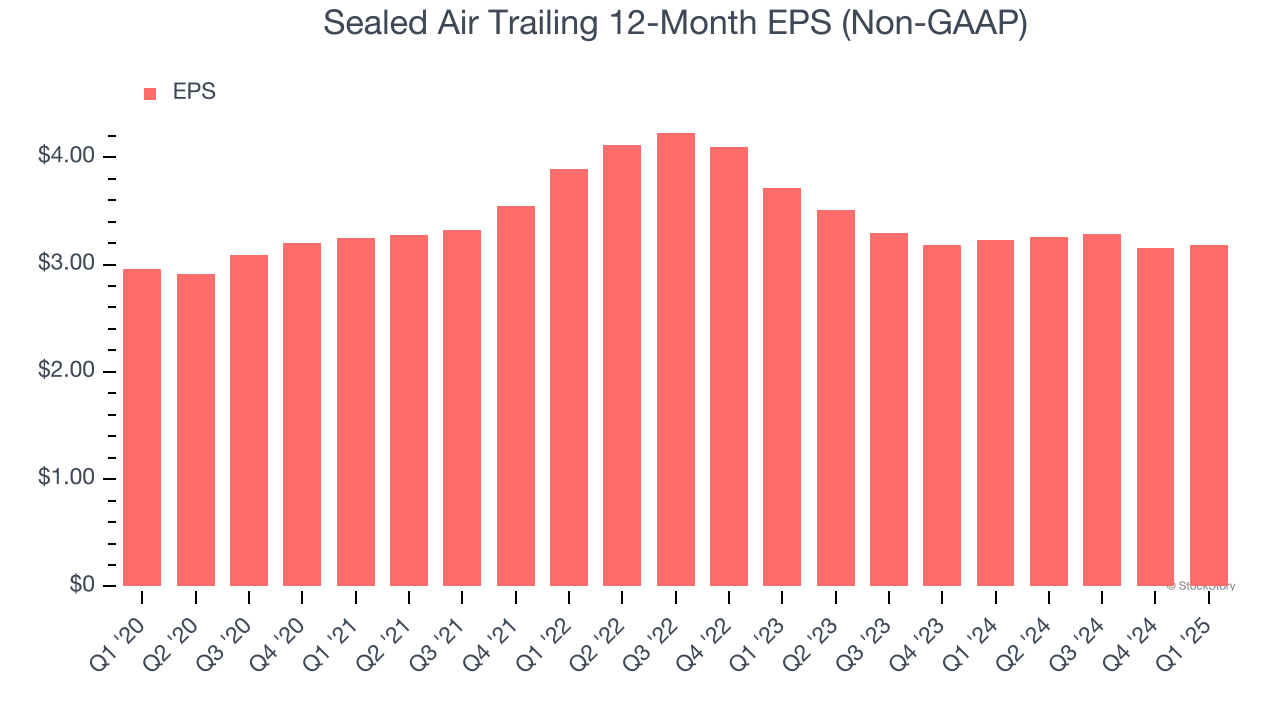
Integrated packaging solutions provider Sealed Air Corporation (NYSE: SEE) reported Q1 CY2025 results beating Wall Street’s revenue expectations, but sales fell by 4.3% year on year to $1.27 billion. The company expects the full year’s revenue to be around $5.3 billion, close to analysts’ estimates. Its non-GAAP profit of $0.81 per share was 20.9% above analysts’ consensus estimates.
Is now the time to buy Sealed Air? Find out by accessing our full research report, it’s free.
Sealed Air (SEE) Q1 CY2025 Highlights:
- Revenue: $1.27 billion vs analyst estimates of $1.27 billion (4.3% year-on-year decline, 0.5% beat)
- Adjusted EPS: $0.81 vs analyst estimates of $0.67 (20.9% beat)
- Adjusted EBITDA: $276 million vs analyst estimates of $260.3 million (21.7% margin, 6% beat)
- The company reconfirmed its revenue guidance for the full year of $5.3 billion at the midpoint
- Management reiterated its full-year Adjusted EPS guidance of $3.10 at the midpoint
- EBITDA guidance for the full year is $1.13 billion at the midpoint, above analyst estimates of $1.10 billion
- Operating Margin: 14.4%, in line with the same quarter last year
- Free Cash Flow was -$12 million, down from $78 million in the same quarter last year
- Market Capitalization: $4.04 billion
Company Overview
Founded in 1960, Sealed Air Corporation (NYSE: SEE) specializes in the development and production of protective and food packaging solutions, serving a variety of industries.
Sales Growth
A company’s long-term performance is an indicator of its overall quality. Any business can put up a good quarter or two, but the best consistently grow over the long haul. Unfortunately, Sealed Air’s 1.9% annualized revenue growth over the last five years was sluggish. This was below our standards and is a rough starting point for our analysis.

Long-term growth is the most important, but within industrials, a half-decade historical view may miss new industry trends or demand cycles. Sealed Air’s performance shows it grew in the past but relinquished its gains over the last two years, as its revenue fell by 2.2% annually. Sealed Air isn’t alone in its struggles as the Industrial Packaging industry experienced a cyclical downturn, with many similar businesses observing lower sales at this time. 
This quarter, Sealed Air’s revenue fell by 4.3% year on year to $1.27 billion but beat Wall Street’s estimates by 0.5%.
Looking ahead, sell-side analysts expect revenue to remain flat over the next 12 months. Although this projection indicates its newer products and services will spur better top-line performance, it is still below average for the sector.
Here at StockStory, we certainly understand the potential of thematic investing. Diverse winners from Microsoft (MSFT) to Alphabet (GOOG), Coca-Cola (KO) to Monster Beverage (MNST) could all have been identified as promising growth stories with a megatrend driving the growth. So, in that spirit, we’ve identified a relatively under-the-radar profitable growth stock benefiting from the rise of AI, available to you FREE via this link.
Operating Margin
Operating margin is a key measure of profitability. Think of it as net income - the bottom line - excluding the impact of taxes and interest on debt, which are less connected to business fundamentals.
Sealed Air has been an efficient company over the last five years. It was one of the more profitable businesses in the industrials sector, boasting an average operating margin of 15.2%.
Analyzing the trend in its profitability, Sealed Air’s operating margin decreased by 2.3 percentage points over the last five years. This raises questions about the company’s expense base because its revenue growth should have given it leverage on its fixed costs, resulting in better economies of scale and profitability.

This quarter, Sealed Air generated an operating profit margin of 14.4%, in line with the same quarter last year. This indicates the company’s cost structure has recently been stable.
Earnings Per Share
We track the long-term change in earnings per share (EPS) for the same reason as long-term revenue growth. Compared to revenue, however, EPS highlights whether a company’s growth is profitable.
Sealed Air’s weak 1.5% annual EPS growth over the last five years aligns with its revenue performance. This tells us it maintained its per-share profitability as it expanded.

Like with revenue, we analyze EPS over a more recent period because it can provide insight into an emerging theme or development for the business.
Sealed Air’s two-year annual EPS declines of 7.5% were bad and lower than its two-year revenue performance.
In Q1, Sealed Air reported EPS at $0.81, up from $0.78 in the same quarter last year. This print easily cleared analysts’ estimates, and shareholders should be content with the results. Over the next 12 months, Wall Street expects Sealed Air’s full-year EPS of $3.18 to shrink by 4.5%.
Key Takeaways from Sealed Air’s Q1 Results
We enjoyed seeing Sealed Air beat analysts’ EPS expectations this quarter. We were also glad its EBITDA outperformed Wall Street’s estimates. Overall, we think this was a solid quarter with some key areas of upside. The stock traded up 2.3% to $28.15 immediately after reporting.
Indeed, Sealed Air had a rock-solid quarterly earnings result, but is this stock a good investment here? We think that the latest quarter is only one piece of the longer-term business quality puzzle. Quality, when combined with valuation, can help determine if the stock is a buy. We cover that in our actionable full research report which you can read here, it’s free.



